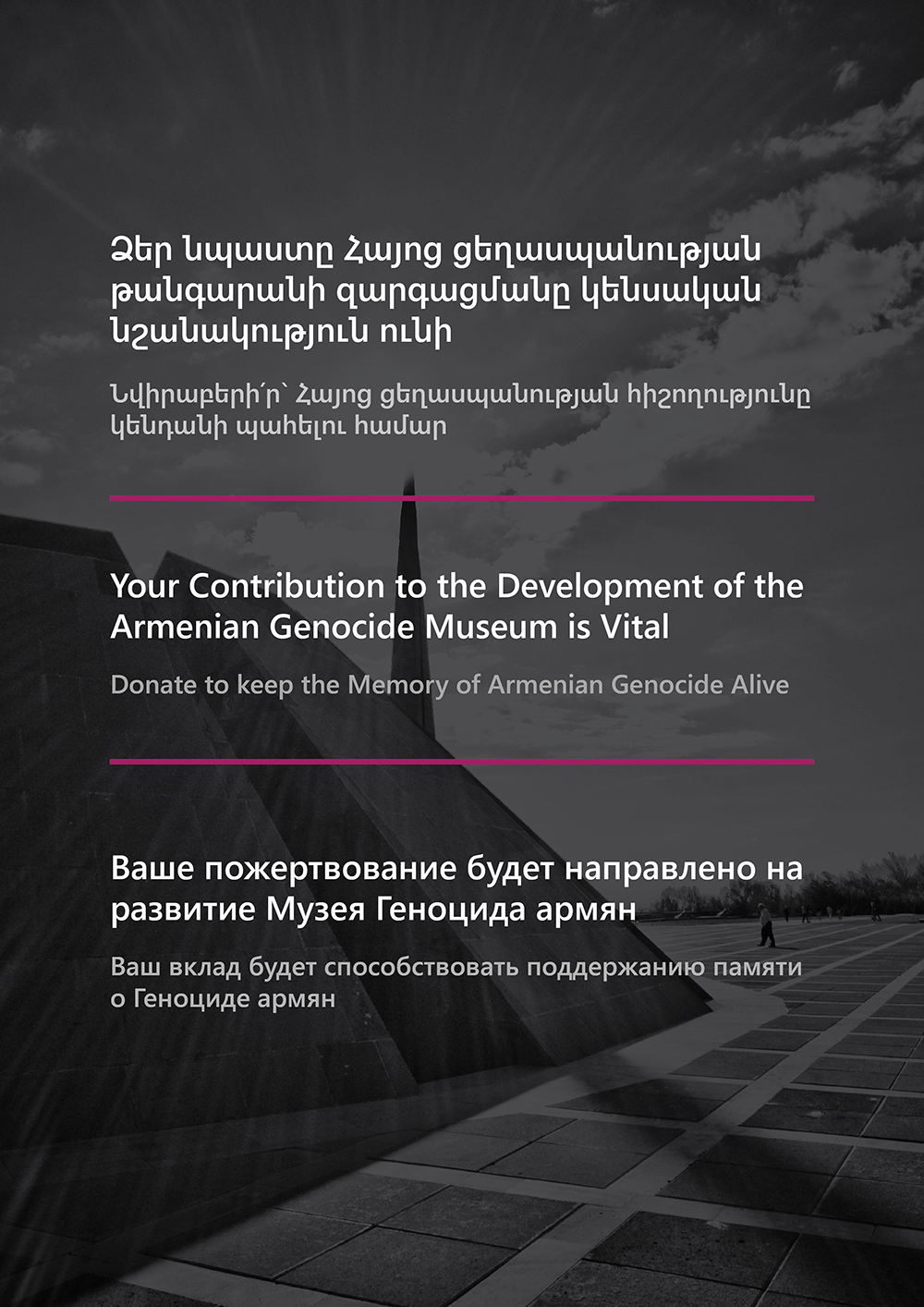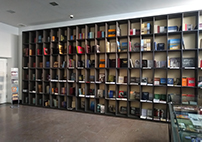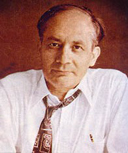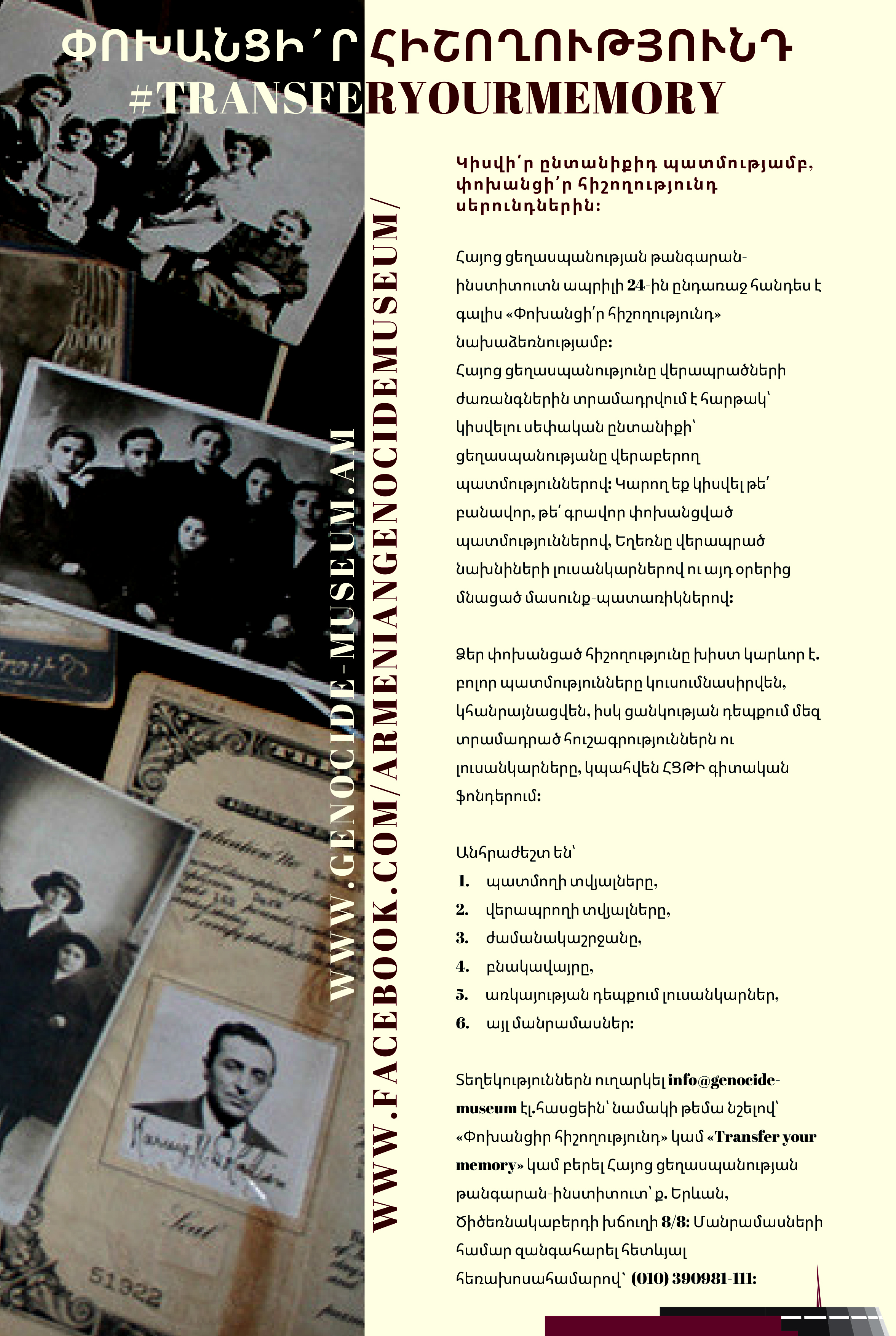Survivors stories |
STORY OF SEROPE ASDADURIAN
"Our family consisted of fifteen members, of whom four are now living, the others having died by the hands of the Kurds and Turks.
"Our family consisted of fifteen members, of whom four are now living, the others having died by the hands of the Kurds and Turks.
"Before the year 1893 the brother of the celebrated robber chief, Mousa Bey, had abducted the daughter of the head man of our village. After a while the girl was rescued from his hands and married to a young man of Vartenis. In the spring of 1893 she visited her father's house, after which her father wished to send her, under safe escort, to her husband at Vartenis. He besought my father to carry her, and he accepted the charae. On the way fifteen Kurds attacked the party and attempted to carry off the woman, but eny father and his companions resisted, and delivered the woman safely to her husband, two of the Kurds being killed in the affray. My father fled to Russia, but soon returned, and for a month or so remained so concealed that no one saw him. After a while, however, it became known that he had returned, and suddenly one day the Mudir (Turkish petty governor) of the neighboring village surrounded our house with a band of zabtiehs (gendarmes) to seize my father. He knew that to be taken was probably to be killed with tortures, and determined to sell his life as dearly as possible. So when the zabtiehs burst open the door and cacne in my father killed one of them and rushed out with his rifle. But in his haste he struck his head violently against the frame of the door and fell, nearly dead. One of the zabiehs fired and killed him. They then killed my mother, my two sisters, my uncle and four cousins. They carried away our cattle and sheep, robbed the house and burned it."
So the crimson storm of carnage rolled on, until not less than thirty villages had been laid waste, so completely destroyed that even the names had been erased from the official records. As to the number of killed it is almost impossible to give accurate estimate. It must have been not less than five or six thousand, many put it much higher. Some soldiers said that a hundred fell to each one of them to dispose of, while others wept because the Kurds did more execution than they. Some, however, claimed to have been unwilling actors in the scene and suffered great mental torments. The wife of one noticed that he failed te pray, as had been his invariable custom. She spoke of it to him and he answered, "God will not hear me. If there is a God he will take vengeance for these awful deeds. Is there any use to pray? "It is also told of other soldiers that on reaching their homes they inquired of Armenian acquaintances, "Who is this Jesus of Nazareth? The Sassun women were constantly calling out to Him."
At last the carnage stopped. The commander-in-chief of the fourth army corps at Erzingan reached the field in time to save a few prisoners alive and to prevent the extermination of four more villages that were on the list to be distroyed. He then sent a telegram to Constantinople that reballion had been overcome and that order had been restored in the province. For this he received a medal and the thanks of the Sultan.
Bliss, Rev. Edwin Munsell. Turkey and the Armenian Atrocities. Edgewood Publishing Company, 1896. Reprinted by Meshag Publishing (Fresno, CA)in 1982
|
|
DONATE |

TO KEEP THE MEMORY OF THE ARMENIAN GENOCIDE ALIVE
Special Projects Implemented by the Armenian Genocide Museum-Institute Foundation
|
COPYRIGHT |

|
AGMI BOOKSTORE |

The Armenian Genocide Museum-Institute’s “World of Books”
|
TESTIMONIAL OF ARMENIAN GENOCIDE SURVIVORS |

THE AGMI COLLECTION OF UNPUBLISHED MEMOIRS
|
ONLINE EXHIBITION |

SELF-DEFENSE IN CILICIA DURING THE ARMENIAN GENOCIDE
DEDICATED TO THE CENTENNIAL OF THE SELF-DEFENSE BATTLES OF MARASH, HADJIN, AINTAB
|
LEMKIN SCHOLARSHIP |

AGMI ANNOUNCES 2024
LEMKIN SCHOLARSHIP FOR FOREIGN STUDENTS
|
TRANSFER YOUR MEMORY |

Share your family story,
Transfer your memory to generations.
On the eve of April 24, the Armenian Genocide Museum-Institute undertakes an initiative “transfer your memory”.
|
|





